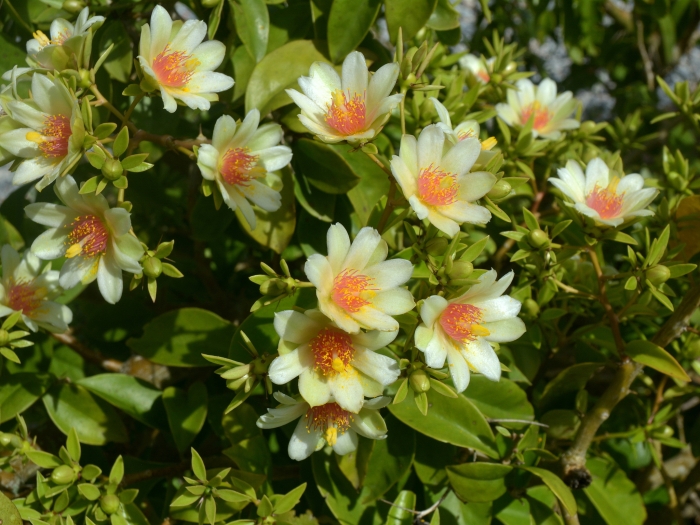Barbados Gooseberry
(Pereskia aculeata)
Barbados Gooseberry (Pereskia aculeata)
/
/

© vinicius_s_domingues
CC BY 4.0
Image By:
© vinicius_s_domingues
Recorded By:
Copyright:
CC BY 4.0
Copyright Notice:
Photo by: © vinicius_s_domingues | License Type: CC BY 4.0 | License URL: http://creativecommons.org/licenses/by/4.0/ | Uploader: vinicius_s_domingues | Publisher: iNaturalist |

























Estimated Native Range
Summary
Pereskia aculeata, commonly known as Barbados gooseberry, is a scrambling shrub or vine native to coastal forests, scrub areas, and mangroves in tropical South America. It can grow up to 33 feet tall and is characterized by its spiny stems and broad, deciduous leaves. This plant is unique among cacti for having leaves and a non-succulent stem. It produces clusters of fragrant white, cream, or pinkish flowers, typically from late spring to early fall, followed by small, yellow-orange to translucent edible fruits that are rich in vitamin C.
Barbados gooseberry is valued for its edible leaves and fruits, which are high in protein and nutrients, and are used in Brazilian cuisine. It is also cultivated for ornamental purposes in tropical and subtropical gardens. In cultivation, it requires full sun to part shade, moderate watering, and well-draining soil. It can be trained on trellises or used as a hedge. However, it has a tendency to become invasive when grown outside its native range, smothering native trees and altering ecosystems, as seen in South Africa. Gardeners should be cautious and check local regulations before planting.CC BY-SA 4.0
Barbados gooseberry is valued for its edible leaves and fruits, which are high in protein and nutrients, and are used in Brazilian cuisine. It is also cultivated for ornamental purposes in tropical and subtropical gardens. In cultivation, it requires full sun to part shade, moderate watering, and well-draining soil. It can be trained on trellises or used as a hedge. However, it has a tendency to become invasive when grown outside its native range, smothering native trees and altering ecosystems, as seen in South Africa. Gardeners should be cautious and check local regulations before planting.CC BY-SA 4.0
Plant Description
- Plant Type: Shrub, Tree
- Height: 10-20 feet
- Width: 5-10 feet
- Growth Rate: Rapid
- Flower Color: White
- Flowering Season: Summer, Fall
- Leaf Retention: Deciduous
Growth Requirements
- Sun: Full Sun
- Water: Medium
- Drainage: Medium, Fast
Common Uses
Drought Tolerant, Edible*Disclaimer: Easyscape's listed plant edibility is for informational use. Always verify the safety and proper identification of any plant before consumption., Showy Flowers
Natural Habitat
native to coastal forests, scrub areas, and mangroves in tropical South America
Other Names
Common Names: Blade Apple Cactus, Barbados Shrub, Bugambilia Blanca, Camelia Blanca, Gooseberry Shrub, Lemon Vine, Leaf Cactus, Grosellero
Scientific Names: , Pereskia aculeata, Cactus lucidus, Cactus pereskia, Peireskia aculeata, Pereskia acardia, Pereskia acardia, Pereskia aculeata f. rubescens, Pereskia aculeata var. brasiliensis, Pereskia aculeata var. godseffiana (hort. ex
GBIF Accepted Name: